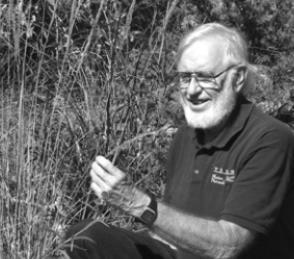More Observations and Recollections Around the Yard
Last week I discussed a number of things inside my one-acre high-fenced yard. Today I will continue my walk around the yard.
We planted an eve’s necklace several years ago near a post oak. Today it is doing fine. And being partially shaded by the post oak, it is now 15 feet tall.
A little further along is the Texas redbud which is now 15- 18 years old. When it was only a couple of years old, some creature (probably racoon or porcupine) must have climbed up on it and broke the main stem that was only hanging on by a small piece of bark. My wife, never giving up on any living thing, taped the broken stem back together. It is now 15 feet tall with a trunk that is four inches in diameter, and only a slight bend where the break happened. It was in full bloom a few days ago.
A few years ago, my wife planted a single heart-leaf skullcap between some post oaks. Every year since it has multiplied forming a circular patch of the flowers. That patch has now expanded to about thirty feet in diameter!
The first year we were in the house, we planted three Texas mountain laurels around the yard. All three grew and bloomed beautifully for years. Then one of the three had one branch that just died for no cause that I could discern. Then the next year the same shrub lost another limb, and finally a couple of years ago the last branch of that plant died. The other two mountain laurels are still healthy, and one is quite large.
Over the years we have had quite a number of blackjack root sprouts come up under the canopy of several mature blackjack oaks. Then about eight to 10 years ago we had two blackjacks come up about four feet apart in an open area too far away from the nearest mature oak to be root sprouts— obviously planted by our squirrels. These two trees came up the same year and for several years appeared to be almost identical.
Now however, these two trees are about 12 feet tall. But one of them drops it’s leaves in early fall while the other keeps its dead leaves until early spring. The one that loses its leaves in the fall also puts out new leaves about two weeks earlier than the other and has larger leaves. These two almost certainly came from acorns from the same tree but now have individual growth habits.
There are a couple of other blackjacks that have come up in the yard too far away from the nearest mature oak to be root sprouts, one about nine feet tall and the other about seven feet. It is interesting that blackjacks are seldom, if ever, found in nurseries, and I can attest to trying to grow some from acorns or small sprouts and not being very successful. All of our mature blackjacks in the yard or just outside the fence successfully produce lots of root sprouts.
This is also a good place to note that both last week and today I have mentioned a number of plants in the yard that we did not plant—Mother Nature did—either from seeds transported from one area or another in the yard or from somewhere more distant. There are several escarpment black cherries, hackberry, cedar elm, prairie flame-leaf sumac, etc., inside the yard. A search outside the fence finds none of the above, and none of the forbs that are common in the yard can be found outside the fence either. The deer are mostly to blame, but so are the cows.
I planted a Mexican plum several years ago, expecting a medium sized shrub—it is now 25 feet tall with a canopy covering 30 feet!
We did have one tree come up that was unexpected—a peach tree. It came up on the edge of our not-so-well-maintained compost pile—obviously a peach pit didn’t decompose but sprouted. It is not in an ideal location for a peach tree, but it does produce peaches. However, the local furry critters always beat me to any of the fruit!
Nature is where you find it, and if you let Mother Nature do her thing, you will have a lot to look at and enjoy.
Until next time…
Jim Stanley is a Texas Master Naturalist and the author of the books “Hill Country Ecology,” “Hill Country Landowner’s Guide” and “A Beginner’s Handbook for Rural Texas Landowners.” He can be reached at <jstmn@ktc>.com. Previous columns can be seen at <www.hillcountrynaturalist.org>.

